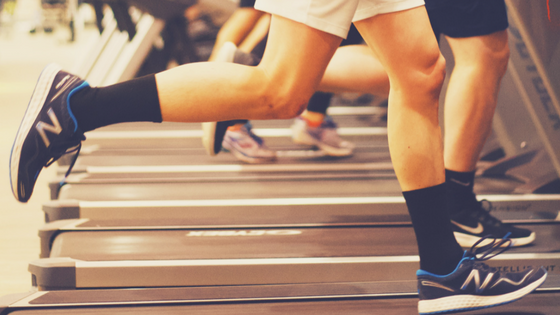

How Much Cardio Do You Really Need
posted on February 23, 2018

Cardio for most people is the least exciting thing next to watching infomercials. But it is important for everyone in some way. Now not everyone needs to be training like an ultra-marathon runner but some should be incorporated into your fitness routine. When determining how much cardio, or aerobic exercise you need, first you need to establish what your goals are. The amount of aerobic exercise you need vastly changes depending on the goal. For example someone that wants to become a world class powerlifter will not need as much aerobic work as someone that is preparing for a marathon. So first, determine your goal.
But first, let’s define “aerobic”…relating to or denoting exercise that improves or is intended to improve the efficiency of the body’s cardiovascular system in absorbing and transporting oxygen. In simpler terms, aerobic exercise raises your heart rate and requires your body to use more oxygen. The benefits of aerobic exercise include reducing your resting heart rate (meaning while you’re not exercising) and lowering blood pressure. Both have significant impact on long term health (“Aerobic Exercise Directory”).
Now you are probably wondering where do I start or HOW MUCH DO I NEED? The American College of Sports Medicine (ACSM) recommends 150 minutes of moderate-intensity each week (“ACSM Issues New Recommendations”). ASCM defines moderate exercise as 50-70% of your Maximum Heart rate (“Target Heart Rate and Estimated Maximum Heart Rate”, 2015). The calculation to find your Maximum Heart Rate is simple- subtract your age from 220. As convenient as the heart rate equation is there is a much simpler way- the talking test. If you can talk comfortably with your friend or trainer during any aerobic exercise you are below that moderate zone and thus not working toward increasing your aerobic capacity.
A very common misconception is that more aerobic work equals fat loss. This is not the case. Yes, aerobic work can supplement weight loss, but so can any type of activity. The best weapon against the battle for fat loss is muscle. Think about it in these terms- if the goal is to lose fat and KEEP IT OFF then what you’re ultimately looking to do is increase your resting metabolic rate. Resting metabolic rate is the amount of energy that your body requires to stay alive. What I mean by staying alive is literally sitting on the couch watching TV. Wouldn’t it be great if you could burn calories while sitting on the couch watching your favorite movie? Sounds too good to be true? In fact, it’s not, but it takes time. A combination of strength training and cardio is really the ultimate combination to change your body composition and overall health. What is the easiest way to get started? Talk to our coaches about a plan. The Strength Lab and the Cardio Lab were designed with these principles in mind.
Now for all you cardio haters… I know you put cardio last on your list of training priorities, especially those of you that love lifting weights. But here’s a “life hack” that may change your mind. Aerobic exercise can increase your capillary density in your muscle (“Muscle Adaptations to Aerobic Training”). This increase in capillary density can help deliver more oxygen and nutrients to your muscles for fuller recovery from those long squat sessions. This doesn’t require 30+ minute cardio sessions. 10-15 minutes on the treadmill at a brisk pace (remember our moderate zone) or some weighted carries or prowler pushes. These workouts can be relatively short with the focus being recovery rather than building a huge aerobic base. Ultimately, however, your aerobic base determines your work capacity and ability to recovery between sessions. So, if you like lifting weights, and you want to do it more often without being as sore or fatigued, then some purposeful cardio will help.
Remember, these are just the basics. If you’re in a routine but don’t seem to be making progress, then assess your training and invert it. If you’re doing 3-5 hours of cardio and 1-2 hours of strength training, do the opposite for 2-3 months and see if you notice any changes. Otherwise, consult our coaches and we’ll walk you through a plan using the classes in the Strength and Cardio Labs.
Read More